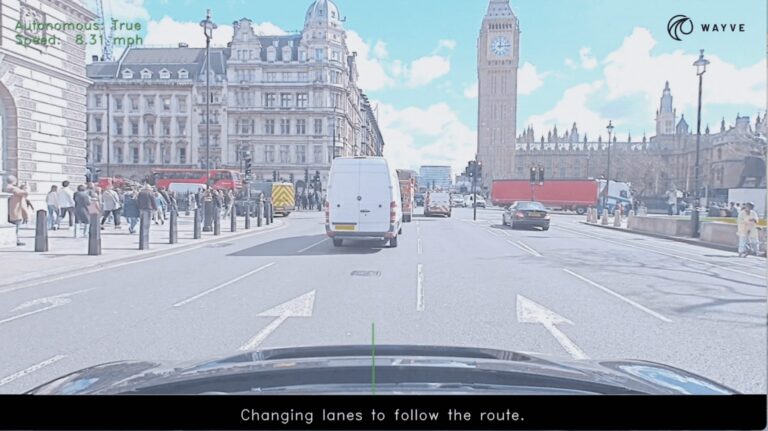Wayve, which specializes in AI technology for assisted and automated driving, has introduced Lingo-2, a closed-loop driving model that integrates vision, language and action to help explain and determine driving behavior.
Lingo-2 has become the first vision-language-action model (VLAM) to undergo testing on public roads.
Building on its previous research model, Lingo-1, which focused on open-loop driving commentary, Lingo-2 integrates language and driving behavior, which “opens up new capabilities for autonomous driving and human-vehicle interaction,” Wayve says. These include adapting driving behaviours through language prompts, interrogating the AI model in real time, and capturing real-time driving commentary.
Wayve identifies the use of AI driving models as a way to learn from data and experience, rather than relying on hand-coded rules or HD maps. Lingo-2 combines Wayve’s vision model with an auto-regressive language model, traditionally used for predicting the next words in sentences, to predict driving paths and offer commentary on driving decisions.
Through testing in Wayve’s neural simulator, Ghost Gym, and public roads, Lingo-2 “gives a strong initial signal of what can be achieved by aligning linguistic explanations and decision-making”, says the company, which expects the model to help build greater confidence in autonomous driving technology
Alex Kendall, CEO and co-founder at Wayve, said, “Lingo-2 is shaping the future of human-vehicle interaction. The Embodied AI we are building will not only automate driving but also create innovative experiences where the driver can interact with the vehicle to gain more confidence and trust in our assisted and autonomous driving systems.”
Jamie Shotton, chief scientist at Wayve, said, “Language offers a tool for us to interact with robots, understand their decisions, train them faster, and control and customize their outputs. At Wayve, we are driven to keep pushing the boundaries of science in service of building safe and trustworthy autonomous systems that can meet the needs of everyone, everywhere.”


